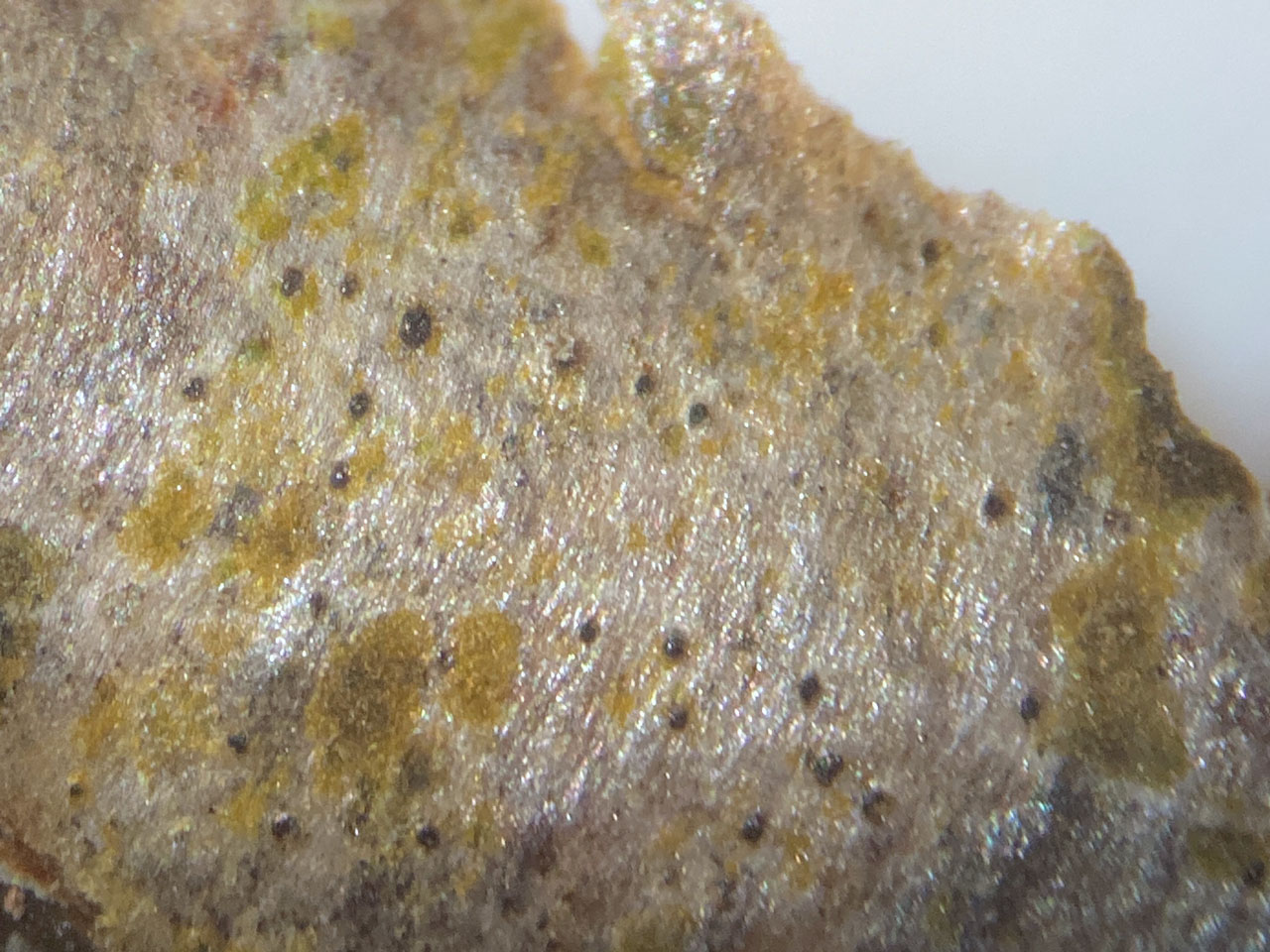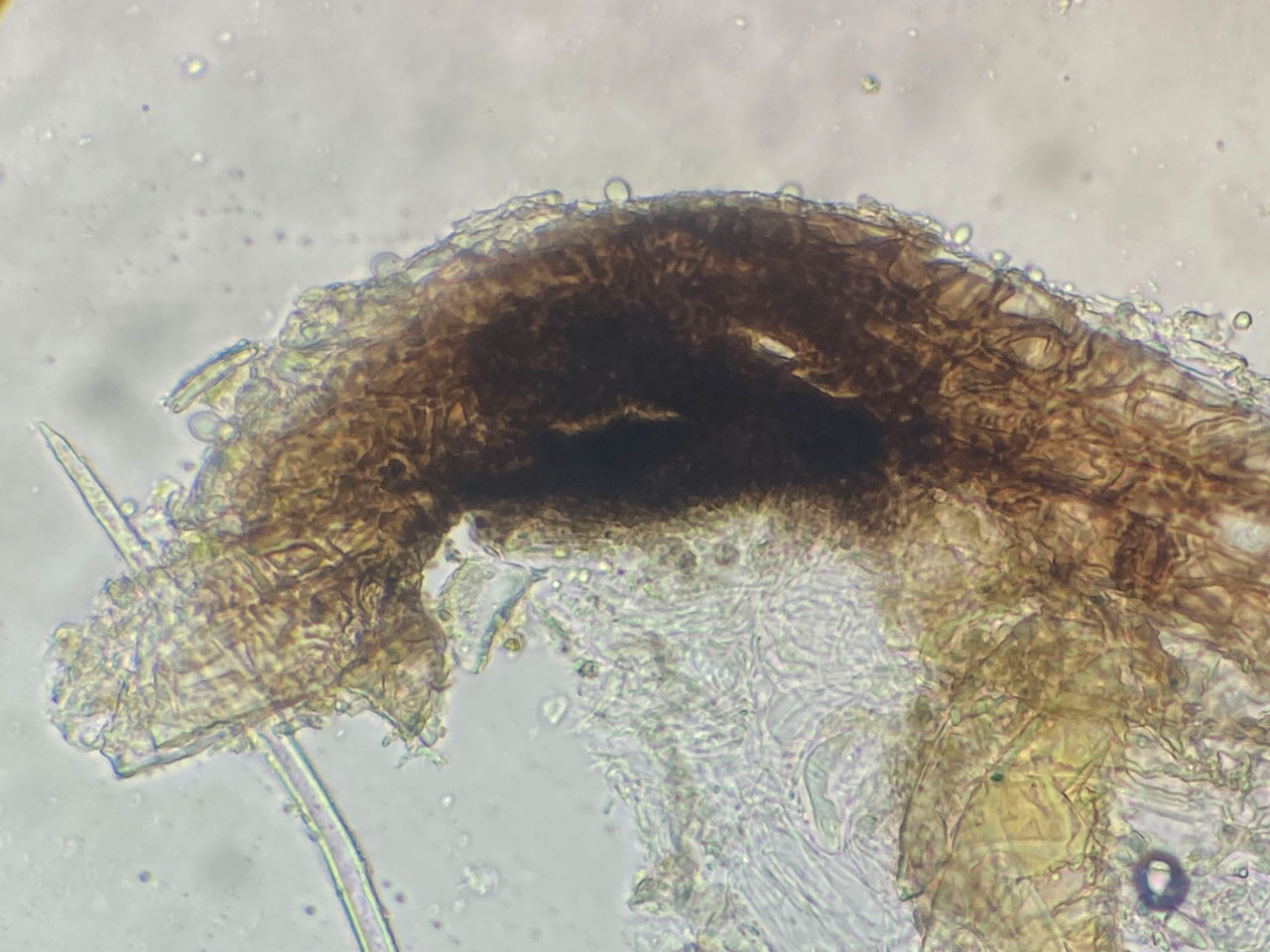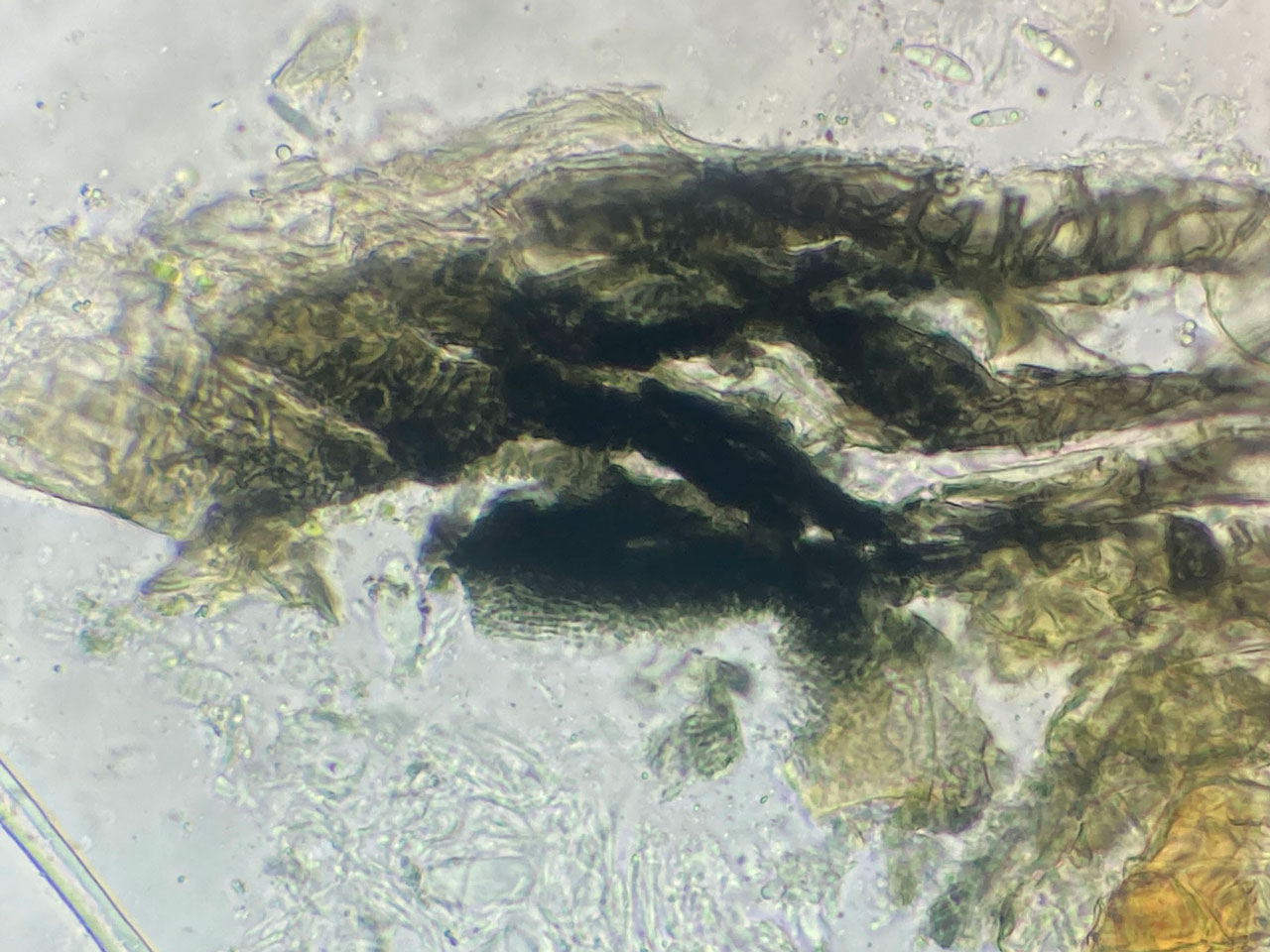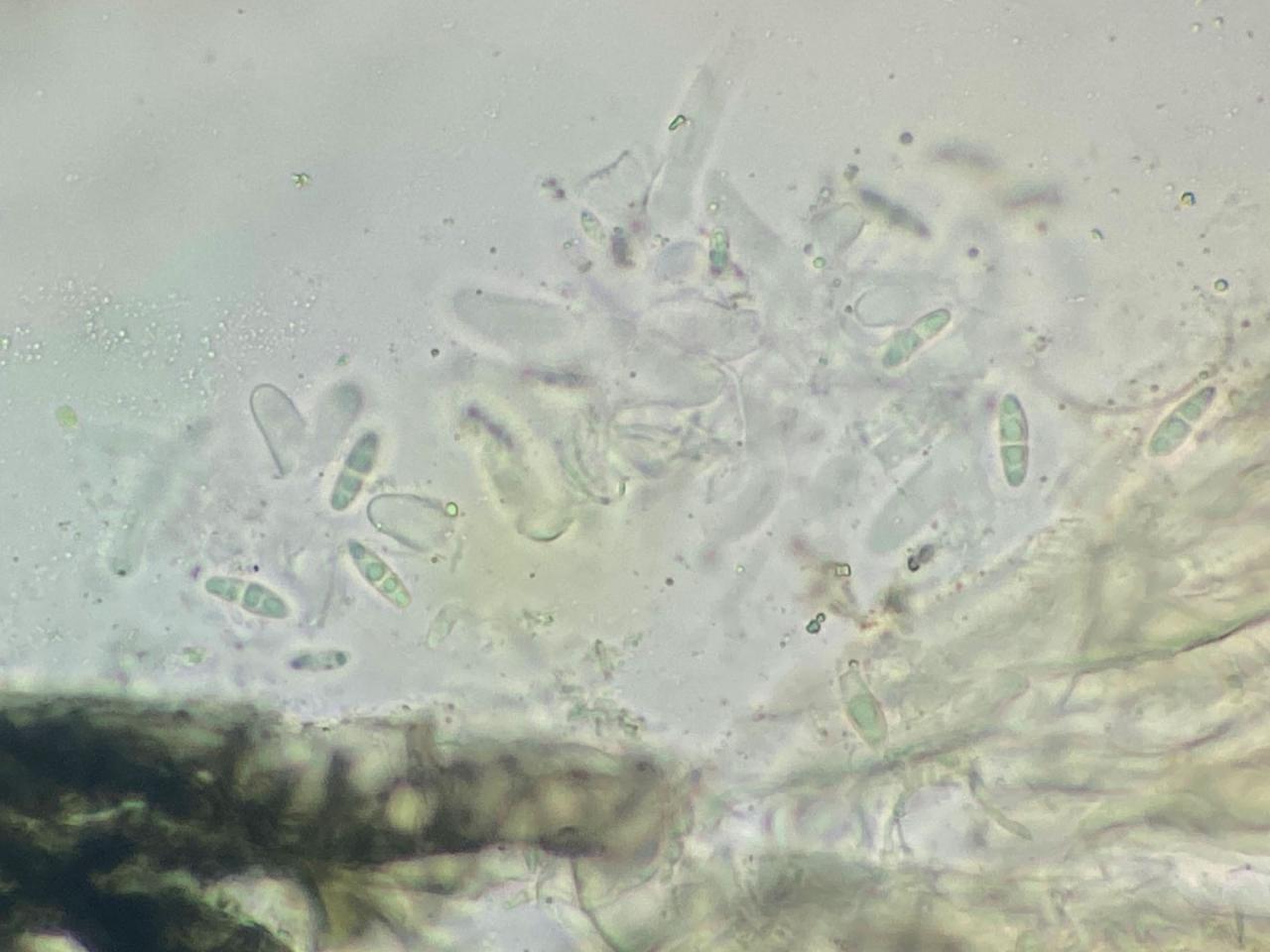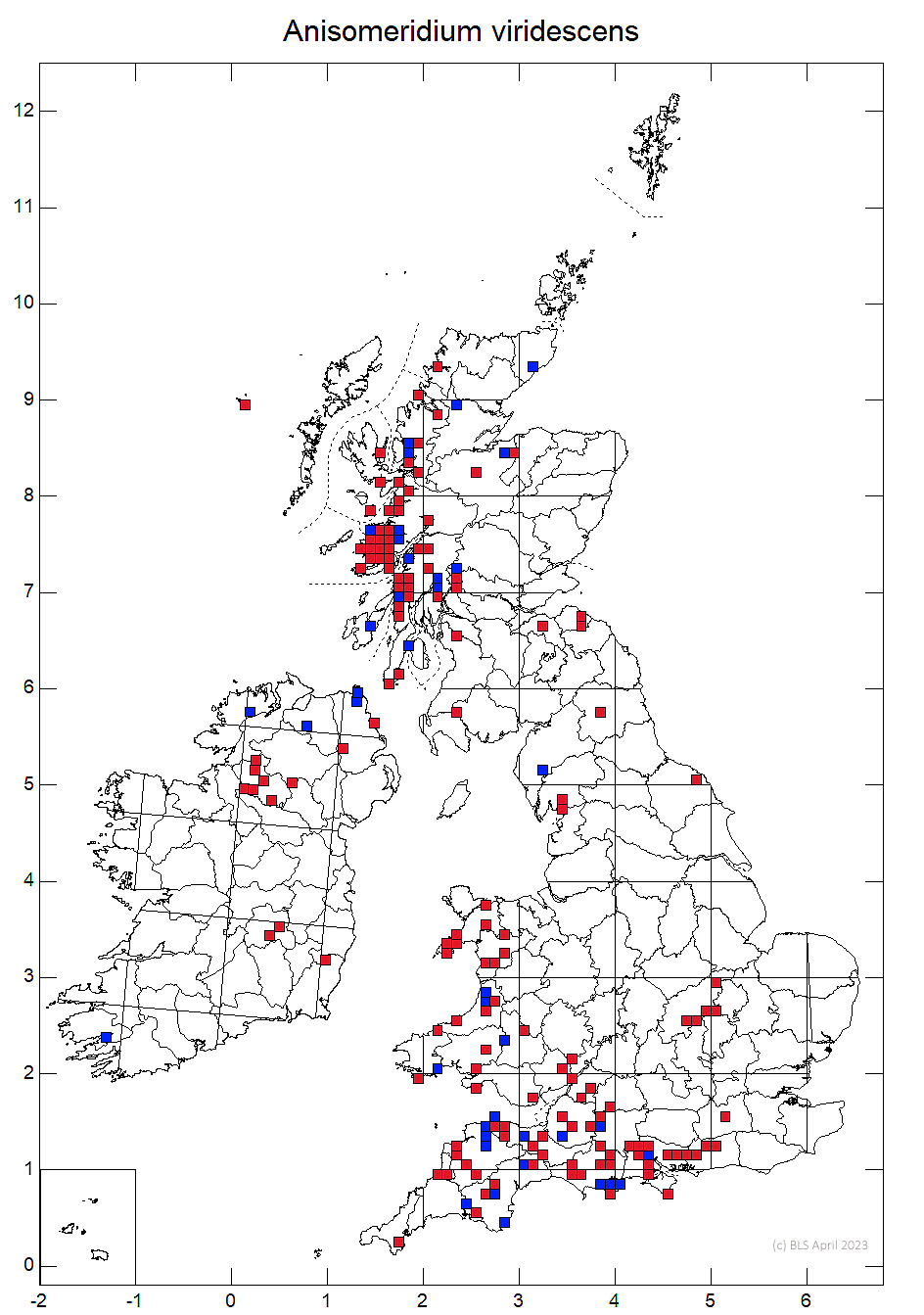A tiny "black dot" found as a pioneer on young Hazel stems on old Hazel bushes in woodland, including abandoned coppices. Generally western, but recently found in eastern England and Scotland so may be spreading. The small black perithecia on silver bark look similar to Eopyrenula sp (E. avellanae & E. grandicula) with pycnidia and microscopic examination is needed to identify this species. See Fungi of Great Britain and Ireland.
Thallus a whitish or pale fawn stain on bark, sometimes pinkish when fresh, Trentepohlia photobiont usually only occurring patchily in the thallus. Ascomata 0.14–0.2 × 0.1–0.15 mm, circular to elliptical in outline, mostly scattered; involucrellum brown, K+ greenish; pseudoparaphyses 0.8–1 µm thick, persistent, much branched; cells 4–10 µm long. Asci 31–49 × 11–17 µm, obclavate to short-cylindrical. Ascospores 12–17 (–19) × 3.5–4.7 µm, 1-septate, usually constricted at the septum; the upper cell usually distinctly wider than the lower, the cells usually biguttulate, without a median constriction; colourless or sometimes brownish and faintly warted when old; perispore indistinct. Pycnidia 40–50 µm diam., with either: (a) macroconidia 9–10.5 × 2–2.5 µm, cylindrical, 2- to 3-guttulate; or (b) microconidia 4–5 × 1–1.3 µm, ovoid-cylindrical to bacilliform, not guttulate.
Differs from species of Naetrocymbe with very small ascomata in having a K+ green involucrellum and thin, slender paraphyses.
Typically a pioneer species of young Hazel branches, along with Eopyrenula grandicula and more rarely Eopyrenula avellanae and latterly displaced by more strongly lichenised species. On smooth bark of Hazel and rarely Holly in old woodlands, but also currently colonising formerly coppiced Hazel in abandoned coppices in lowland England.

Western Britain, but now spreading east, Ireland.
Probably recovering and spreading with the decline in Hazel coppicing
Britain: Notable & International Responsibility species
Scotland: Priority Taxon for Biodiversity in Scotland
Cannon, P., Coppins, B., Aptroot, A., Sanderson, A. & Simkin, J. (2023). Perithecial genera I, including Acrocordia, Alloarthopyrenia, Anisomeridium, Antennulariella, Arthopyrenia, Celothelium, Cyrtidula, Dichoporis, Eopyrenula, Julella, Leptorhaphis, Leptosillia, Lithothelium, Mycomicrothelia, Mycoporum, Naetrocymbe, Pyrenula, Rhaphidicyrtis, Sarcopyrenia, Swinscowia and Tomasellia. Revisions of British and Irish Lichens 37: 1-59.
Text by Neil A Sanderson based on Cannon et al (2023)
